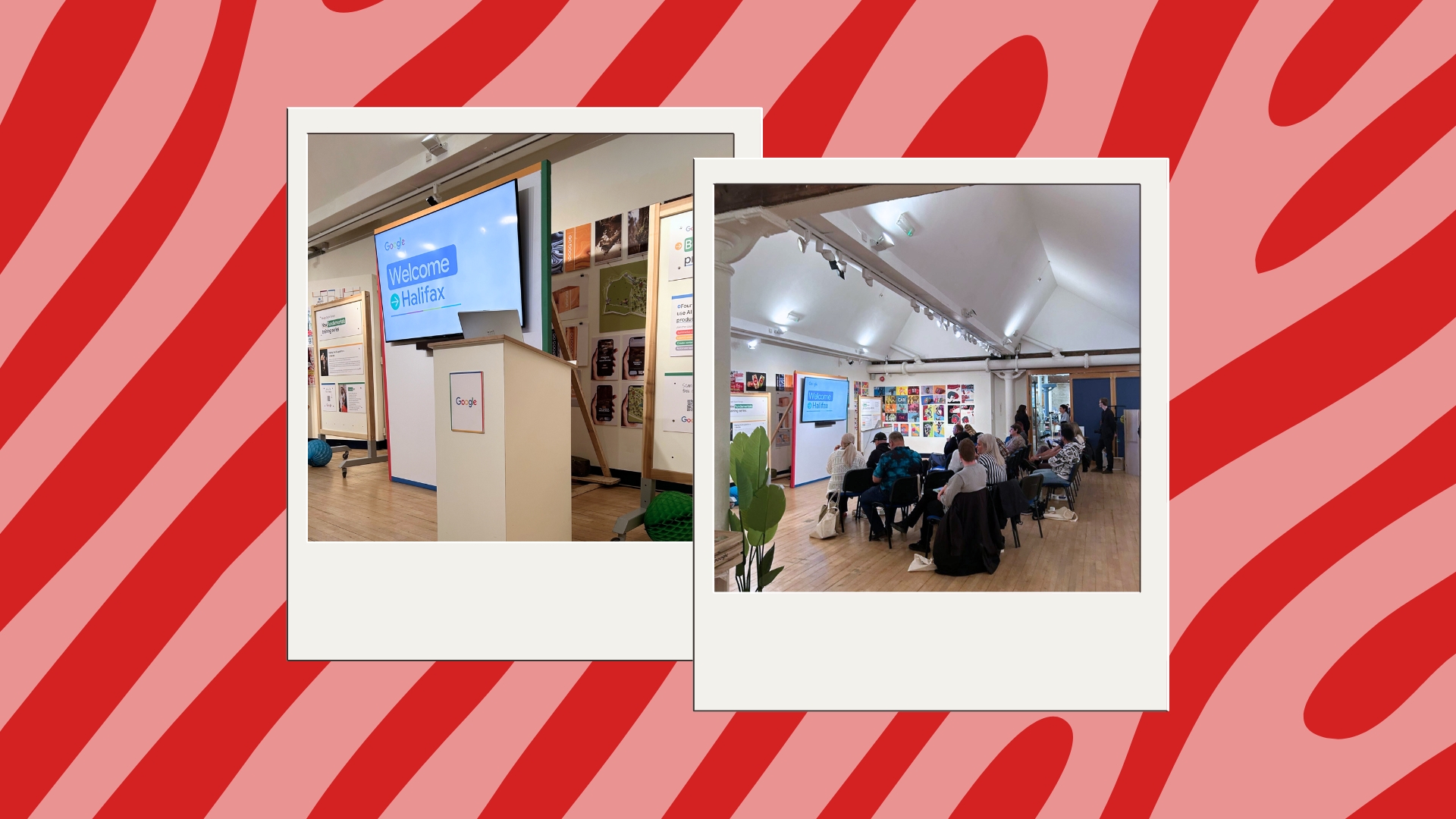Last week, on Friday the 7th of June, our team took part in the Google Digital Garage Day hosted by Dean Clough. The event held by Google covered a variety of digital skills, ranging from the utilisation of AI in marketing strategies to writing for social media.
What did we learn?
Writing for social media
One of the first points to be established in the discussion was the necessity to define your brand’s voice and personality. Forming your brand voice starts with figuring out your values and beliefs and uncovering what tone of voice best suits your messaging. Your brand personality is the traits and characteristics that your brand will embody.
Gaining an understanding of your audience’s motivators and pain points is super important when producing content for them. One of the best techniques to establish a pain point or motivator is to partake in social listening exercises, typically a brand will monitor customer feedback and discussions on social platforms.
When positioning content, a product or service to your audience, don’t just provide the features that make it a desirable thing. Instead, let the audience know the benefits the product, content or service could have on their life. Sell the lifestyle that your brand can provide to customers and help them visualise it too.
Google proposes we should always include a CTA (call to action). Calls to action prompt your customers to take further action, typically urging them to buy a product, subscribe or click a link. A CTA encourages the next step for the audience and makes it a lot easier to navigate doing so.
Customer service should always be about building a strong rapport with your audience. Trust needs to be built and the audience needs to feel heard and respected. When handling a customer complaint, it’s important to listen and stay professional, i.e. avoiding humorous language.
One of the last points made surrounding content creation was the consideration needed as dual screening, also known as second screening, becomes more common. Second screening is when a person is using two or more devices to consume content, such as their mobile phone and computer. As this becomes the standard, marketers need to find ways to position adverts and content across platforms and devices. Doing so will help raise brand awareness and provide more of an opportunity to be noticed. One method of doing this is having synchronised ads, which is done by displaying adverts on two screens within a short time frame to get the acquisition.
Boosting productivity with AI
As we moved on to the next point of learning, Google discussed a fundamental part of understanding AI is to be able to make the distinction between predictive and generative AI models. Predictive AI looks at the data it has been fed and makes a prediction based on patterns and relationships found. Whereas generative AI uses the data it has been provided to produce new data sets.
Large language models such as Google Gemini or Chat GPT are essentially large processors which are fed data. The LLM is essentially a probability engine that has considered factors to help determine results. As the speakers made clear during the discussion, wielding AI requires an understanding of how it works and what to be aware of. One of the main points noted was AI’s ability to create ‘hallucinations. Hallucinations are where non-factual information is pulled through to the answer. It’s important to always challenge the integrity of the results and consider the quality and neutrality of the results being pulled through.
When using an LLM you mustn’t feed any private data into it as the whole basis of the model is that it will be utilised to learn from and provide answers to other relevant queries.
Content creation
When crafting content with the help of AI, the AI needs to provide a wider context outside of the content you’re looking to make. This means feeding it information about your brand, the goals you have, the direction of the content, the audience it is being positioned to, and general information regarding your brand.
Scale is a process used when creating content, starting with defining success which then leads to creative excellence, and then looking at how to achieve the goals in your projects. You need to identify the lifecycle of your content. The last step is to experiment with your process, trial new and old techniques and use each failure as an opportunity to learn.
When creating a content plan some fundamental things need to be outlined, the first and most important is to outline the goals and objectives. Then you need to work out what your resources and budget are to work out what is achievable. Identifying who the audience is critical, ultimately this is who will be consuming the content, products and services and as such you need to know who it is you are positioning your brand to. Once you understand your audiences, you need to map out which platforms you will utilise, this is especially important when considering the different styles and formats that work for each platform’s audience.
The final steps in the process are to plan, execute and analyse using the SMART method. SMART goals allow us to set goals and objectives for a campaign. It provides a set of criteria which you can later use to analyse the results of your campaign.
- Specific
- Measurable
- Achievable
- Realistic
- Time
The Intelligency team absolutely loved attending the event, it was insightful, engaging and a fantastic opportunity to meet some of our peers! We look forward to attending the next one and bringing you along with us.





